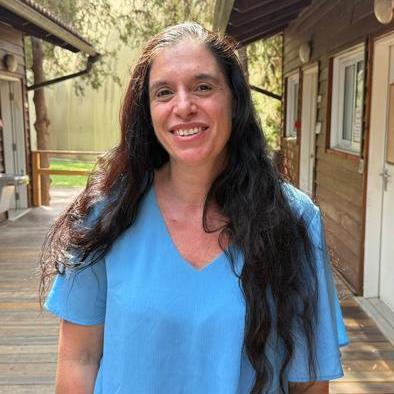A new collaborative study between Reichman University and the Technion reveals, for the first time, how living bacteria are able to survive inside dust particles transported through the atmosphere by desert storms originating in the Sahara Desert and Egypt, ultimately reaching Israel.

The study was led by Dr. Ilana Kolodkin-Gal, a senior lecturer and researcher at the Scojen Institute for Synthetic Biology at Reichman University, in collaboration with Prof. Naama Lang-Yona of the Faculty of Civil and Environmental Engineering at the Technion. The research team also included Dr. Hilit Levy-Barazany, director of Dr. Kolodkin-Gal’s laboratory, Dr. Liat Rahamim Ben-Navi from the Scojen Institute, and students Prem Murugan and Ella Lahav.
READ MORE: It’s not just humans — bacteria have memory too
READ MORE: The Rahlff lab
The researchers found that the bacteria are able to organize themselves within dust particles into multilayered microscopic structures. These structures protect them from dryness, extreme radiation, and severe nutrient deprivation, enabling them to survive the long journey through the open air. Within those particles, sophisticated bacterial communities develop, exhibiting a biological division of labor between different individuals, and even complex chemical communication — all within a tiny shared niche.
This finding reshapes the current understanding of the interactions between the microbiome and the environment, indicating that the air we breathe may contain entire communities of bacteria originating in distant regions — communities that bring with them new genetic traits capable of integrating into both natural ecosystems and the human body.
Innovative strains
The study also identified one of main strains as a beneficial bacterium from the Bacillus subtilis family, known for its positive applications in agriculture, construction, and medical probiotics. The researchers believe that the selection process that occurs during dust storms “favors” the more innovative strains — a phenomenon that could directly enhance this bacterium’s applications across several fields.
Understanding the mechanisms by which bacteria survive and interact in such an extreme environment will help assess their potential impact on natural and human systems, including effects on the respiratory tract and overall human health.
Dr. Ilana Kolodkin-Gal explains: ״Dust storms are not just a meteorological phenomenon — they serve as a transport route for particularly resistant bacteria. These bacteria arrive in the human environment carrying new genes that may affect, and even benefit, our microbiome. This discovery opens the door to new possibilities for harnessing these bacteria in medicine, agriculture, and green industries.”







No comments yet